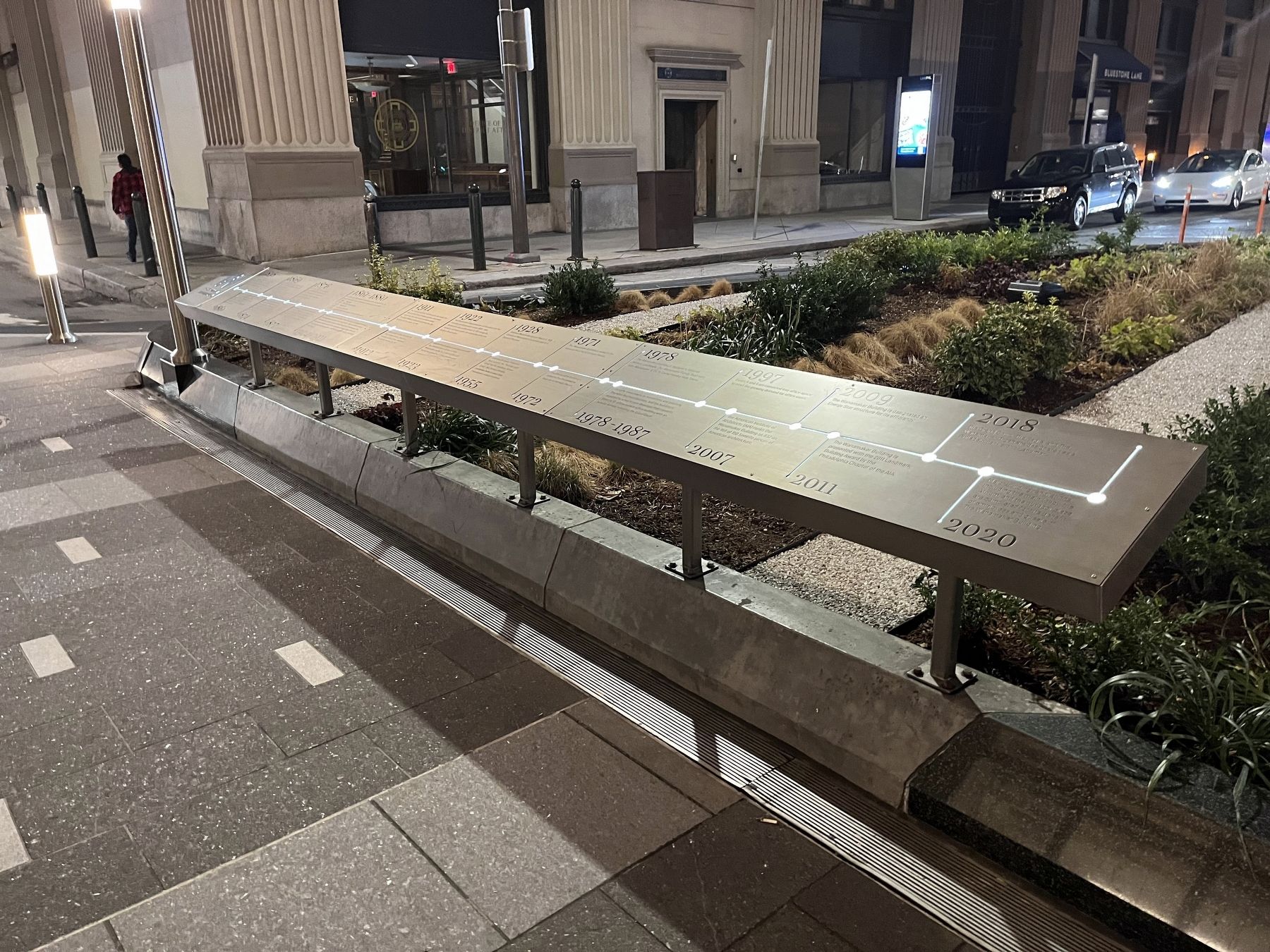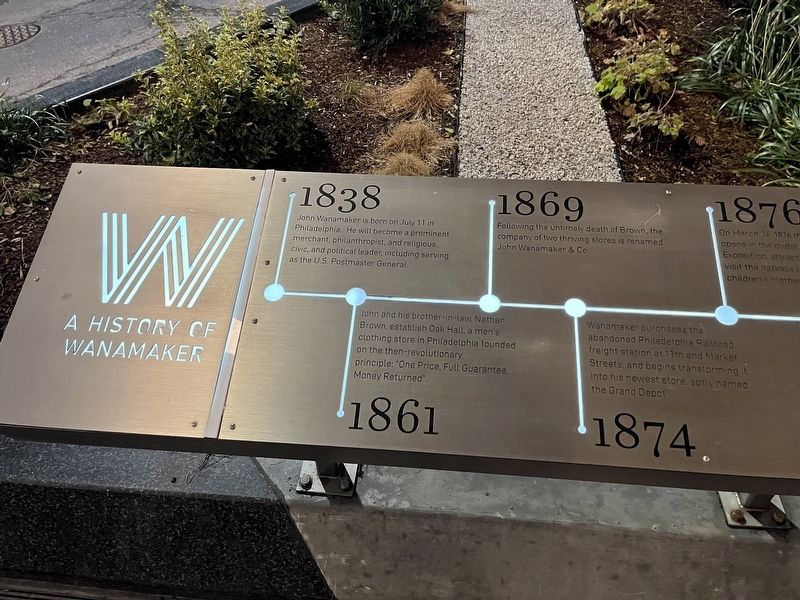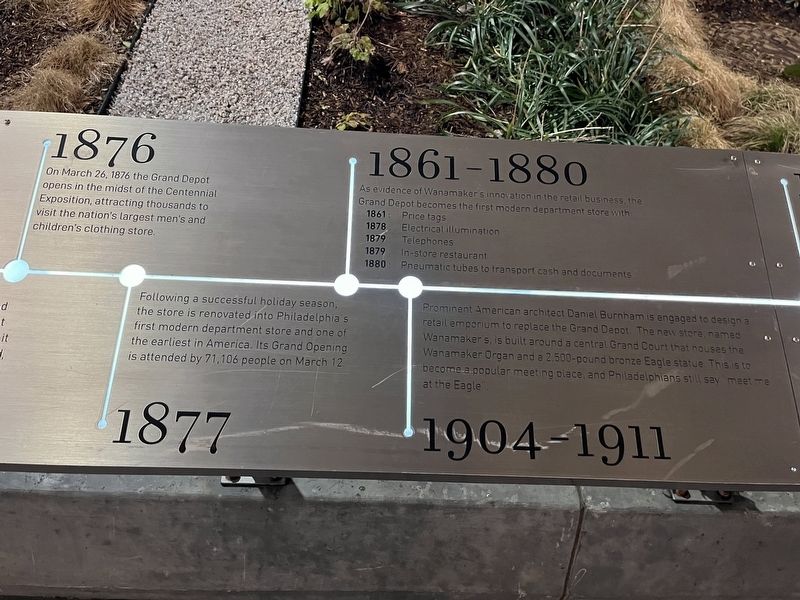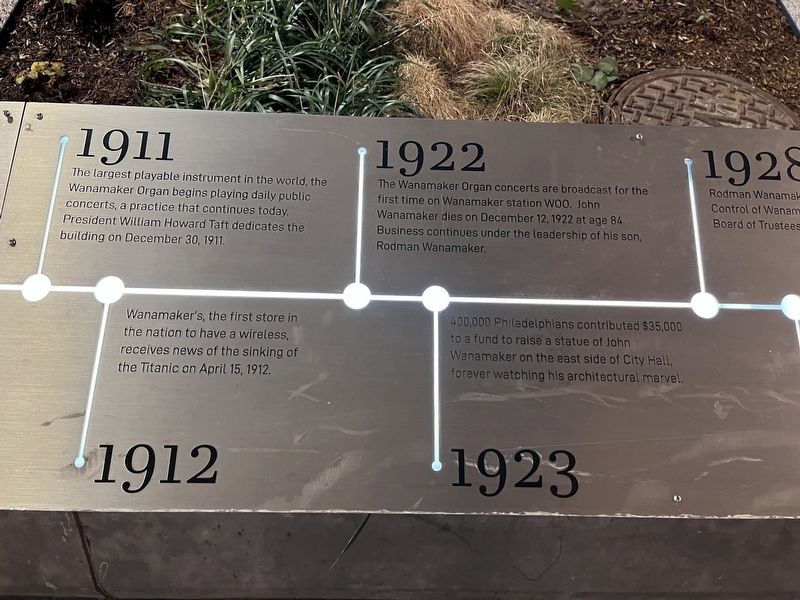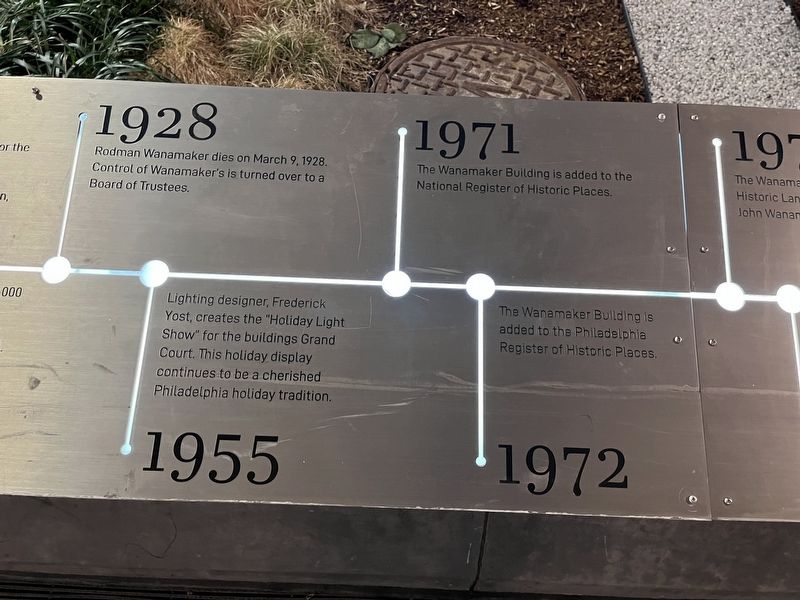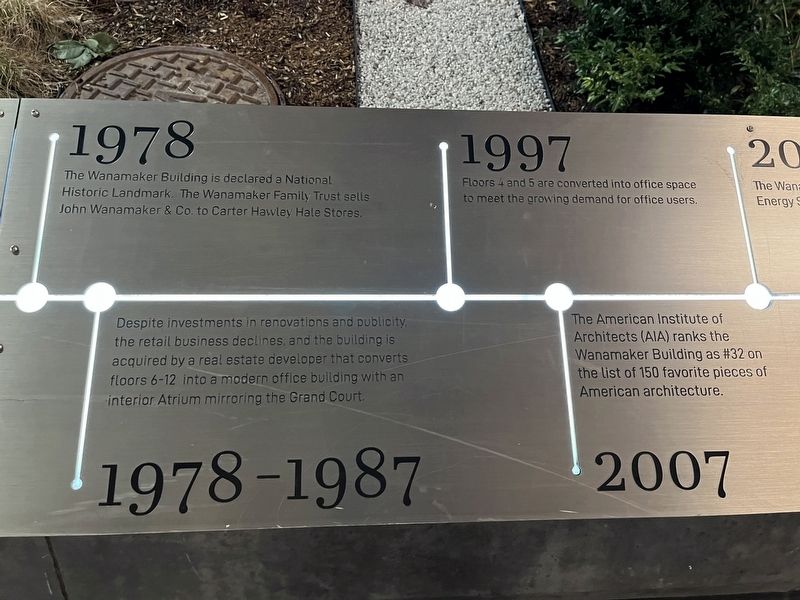Midtown Village in Philadelphia in Philadelphia County, Pennsylvania — The American Northeast (Mid-Atlantic)
A History of Wanamaker
1838: John Wanamaker is born on July 11 in Philadelphia. He will become a prominent merchant, philanthropist, and religious, civic, and political leader, including serving as the U.S. Postmaster General.
1861: John and his brother-in-law, Nathan Brown, establish Oak Hall, a men's clothing store in Philadelphia founded on the then-revolutionary principle: "One Price, Full Guarantee, Money Returned".
1869: Following the untimely death of Brown, the company of two thriving stores is renamed John Wanamaker & Co.
1874: Wanamaker purchases the abandoned Philadelphia Railroad freight station at 13th and Market Streets, and begins transforming it into his newest store, aptly named the Grand Depot.
1876: On March 26, 1876 the Grand Depot opens in the midst of the Centennial Exposition, attracting thousands to visit the nation's largest men's and children's clothing store.
1877: Following a successful holiday season, the store is renovated into Philadelphia's first modern department store and one of the earliest in America. Its Grand Opening is attended by 71,106 people on March 12.
1861-1880: As evidence of Wanamaker's innovation in the retail business, the Grand Depot becomes the first modern department store with:
1861: Price tags
1878: Electrical illumination
1879: Telephones
1879: In-store restaurant
1880: Pneumatic tubes to transport cash and documents
1904-1911: Prominent American architect Daniel Burnham is engaged to design a retail emporium to replace the Grand Depot. The new store, named Wanamaker's, is built around a central Grand Court that houses the Wanamaker Organ and a 2,500-pound bronze Eagle statue. This is to become a popular meeting place, and Philadelphians still may say "Meet me at the Eagle".
1911: The largest playable instrument in the world, the Wanamaker Organ begins playing daily public concerts, a practice that continues today. President William Howard Taft dedicates the building on December 30, 1911.
1922: The Wanamaker Organ concerts are broadcast for the first time on Wanamaker station WOO. John Wanamaker dies on December 12, 1922 at age 84. Business continues under the leadership of his son, Rodman Wanamaker.
1923: 400,000 Philadelphians contributed $35,000 to a fund to raise a statue of John Wanamaker on the east side of City Hall, forever watching his architectural marvel.
1928:
1955: Lighting designer, Frederick Yost, creates the "Holiday Light Show" for the buildings Grand Court. This holiday display continues to be a cherished Philadelphia holiday season.
1971: The Wanamaker Building is added to the National Register of Historic Places.
1972: The Wanamaker Building is added to the Philadelphia Register of Historic Places.
1978: The Wanamaker Building is declared a National Historic Landmark. The Wanamaker Family Trust sells John Wanamaker & Co. to Carter Hawley Hale Stores.
1978-1987: Despite investments in renovations and publicity, the retail business declines, and the building is acquired by a real estate developer that converts floors 6-12 into a modern office building with an interior Atrium mirroring the Grand Court.
1997: Floors 4 and 5 are converted into office space to meet the growing demand for office users.
2007: The American Institute of Architects (AIA) ranks the Wanamaker Building as #32 on the list of 150 pieces of American architecture.
2009: The Wanamaker Building is designated as an Energy Star structure for its efficiency.
2011: The Wanamaker Building is presented with the
2018: The Grand Court, The Eagle, and The Wanamaker Organ are designated as a Philadelphia Historic Landmark.
2020: Major building renovations including the main lobby, the Atrium, and the outdoor plaza are completed for the benefit of employees and guests of The Wanamaker Building.
Topics and series. This historical marker is listed in these topic lists: Architecture • Industry & Commerce • Landmarks. In addition, it is included in the Former U.S. Presidents: #27 William Howard Taft, the National Historic Landmarks, and the Pennsylvania Railroad (PRR) series lists. A significant historical date for this entry is March 26, 1876.
Location. 39° 57.098′ N, 75° 9.756′ W. Marker is in Philadelphia, Pennsylvania, in Philadelphia County. It is in Midtown Village. Marker is at the intersection of East Penn Square (Pennsylvania Route 611) and South Juniper Street, on the right when traveling north on East Penn Square. Touch for map. Marker is at or near this postal address: 2 E Penn Square, Philadelphia PA 19107, United States of America. Touch for directions.
Other nearby markers. At least 8 other markers are within walking distance of this marker. William McKinley (within shouting distance of this marker); Mother’s Day (within shouting distance of this marker); The Welsh Society (within shouting distance of this marker); Philadelphia City Hall Gates
Credits. This page was last revised on February 2, 2023. It was originally submitted on March 1, 2022, by Devry Becker Jones of Washington, District of Columbia. This page has been viewed 530 times since then and 107 times this year. Photos: 1, 2, 3, 4, 5, 6. submitted on March 1, 2022, by Devry Becker Jones of Washington, District of Columbia.
Editor’s want-list for this marker. Daylight photos of the marker • Can you help?
